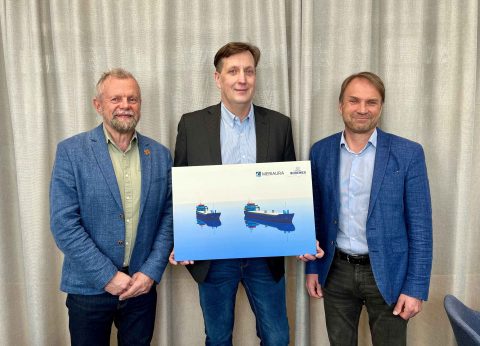The Wilson Flex I Arrives in Europe

The Norwegian shortsea liner shipping company, Wilson, has welcomed the first Wilson Flex vessel to its fleet. This ship, which has now arrived in Europe, is the first in a series of five ships that will join Wilson’s fleet. They have been taken over by Wilson from their partner, the German company, Arkon Shipping.
The MV Wilson Flex I is a general cargo ship, built in 2022. It measures 88.47 metres in length, with a 14.55-metre beam. It has a gross tonnage of 2995 tonnes and a Summer DWT of 4267 tonnes. The ship’s design, naval architecture, construction and system engineering was handled by Groot Ship Design and Dayang Offshore Equipment.
The Rhenus-Arkon-Shipinvest investment company received the ship on the 11th of January, 2022. The maiden voyage of the MV Wilson Flex I brought it from China to Europe, via Yeosu, South Korea, where the European crew boarded the ship. The Wilson Flex I has now already started transporting cargo for Wilson customers. It was recently spotted in the North Sea loaded with windmill blades.
The construction of these flex vessels increases flexibility for clients seeking to move special tonnage. Indeed, the ship’s hatches can be opened, and the bridge is in front of the vessel. These two design elements allow for the loading of much larger elements to be safely transported, while the bridge still has an unobstructed view. Furthermore, the Wilson Flex ships can load up to 4200 tonnes of dry cargo.
The Wilson Flex ships are also a milestone in terms of sustainability. Indeed, Rhenus-Arkon-Shipinvest is aiming to provide more sustainable short-sea traffic with these new ships. They will operate on all the Europe short-sea traffic routes, including the Baltic Sea, the North Sea, the Mediterranean Sea and the Black Sea.
The Wilson Flex ships are Hanse Eco class vessels and meet IMO Tier III emissions standards, which will be compulsory for new vessels from 2025 onwards. Indeed, they are equipped with support from an electric motor and a waste gas treatment unit. Lastly, the optimised hull shape leads to a 20 per cent lower fuel consumption compared to traditional ships.
You just read one of our premium articles free of charge
Want full access? Take advantage of our exclusive offer





